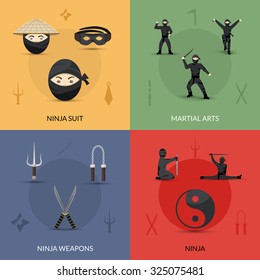The History And Approach Of Martial Arts: A Deep Dive
The History And Approach Of Martial Arts: A Deep Dive
Blog Article
Content Writer-Ingram Wall
Step into the old globe where martial arts were substantiated of necessity in varied areas. Societies crafted special combating styles intertwined with historic contexts. Techniques evolved over centuries via devoted practice and social exchanges. Today, contemporary martial arts blend standard components for optimal effectiveness. Philosophically, martial arts highlight self-control, self-improvement, and consistency. Respect, humbleness, and balance are fundamental principles guiding experts towards growth and durability. Check out the midsts of this rich history and viewpoint to discover the profound impacts shaping this long-lasting technique.
Origins of Martial Arts
Martial arts originated in various areas worldwide, developing as practical combat systems to defend against hazards. These ancient fighting styles were established out of necessity, with each culture crafting strategies matched to their unique atmospheres and challenges. From the grappling arts of Jujutsu in Japan to the striking methods of Martial art in China, martial arts were deeply intertwined with the historical, social, and social textile of their corresponding cultures.
In Japan, the samurai class polished martial arts like Kenjutsu, the art of the sword, which later evolved into the extra popularized form of Kendo. At the same time, in Brazil, Capoeira became a mix of dancing and fight, created by enslaved Africans as a method to stand up to fascism. Each fighting style brings with it an abundant background and ideology, showing the values and ideas of individuals that practiced them.
As you explore the origins of martial arts, you reveal a tapestry of human resourcefulness, strength, and the unrelenting spirit of warriors throughout time.
Development of Methods
Via centuries of practice and refinement, battle methods within various martial arts have undertaken an extensive evolution. From ancient designs like Martial art and Martial arts to a lot more contemporary disciplines such as Brazilian Jiu-Jitsu and Krav Maga, the development of techniques has actually been driven by a combination of social influences, practical applications, and technical developments.
One substantial element of this development is the cross-pollination of techniques between different martial arts. As an example, strategies from conventional Japanese Jiu-Jitsu were integrated right into the development of Judo by Jigoro Kano in the late 19th century. This blending of designs has resulted in the growth of crossbreed martial arts like Mixed Martial Arts (MMA), which combine components of striking, grappling, and submission techniques.
Moreover, the evolution of techniques has actually been formed by the boosting focus on performance and performance in combat. just click the up coming web site have actually constantly sought to fine-tune their methods with strenuous training, trial and error, and competitors, causing the growth of very specialized and efficient combating designs. In general, the evolution of techniques in martial arts mirrors the vibrant nature of battle and the recurring quest for enhancement and innovation.
Thoughtful Structures
Exploring the underlying thoughtful principles of martial arts offers insight into their core worths and guiding beliefs. At the heart of lots of martial arts techniques is the concept of discipline itself. By educating your body and mind to act as one natural system, you grow discipline that expands past the dojo or health club into day-to-day life. This technique encompasses regard, humility, and self-control, forming not simply your physical abilities yet likewise your character.
An additional fundamental philosophical foundation in martial arts is the idea of continual self-improvement. The trip of grasping a martial art is continuous, with experts continuously striving to much better themselves, both literally and mentally. This focus on development cultivates strength, perseverance, and a growth frame of mind that can be related to all aspects of life.
Furthermore, martial arts stress the importance of harmony and balance. Strategies are created to utilize an opponent's power against them, highlighting the principle of yielding and rerouting pressure instead of fulfilling it head-on. This viewpoint encompasses social partnerships, promoting tranquil resolutions and mutual understanding. By welcoming these philosophical foundations, martial artists not just improve their battle skills yet likewise grow a way of living centered on personal development, respect, and harmony.
navigate to this website , the history and ideology of martial arts use an abundant tapestry of practice, discipline, and self-improvement.
Consider example the tale of Bruce Lee, who changed martial arts by mixing various designs and viewpoints to create his very own special form of Jeet Kune Do.
With devotion and advancement, martial musicians continue to press boundaries and motivate others to reach their full capacity both in battle and in life.
